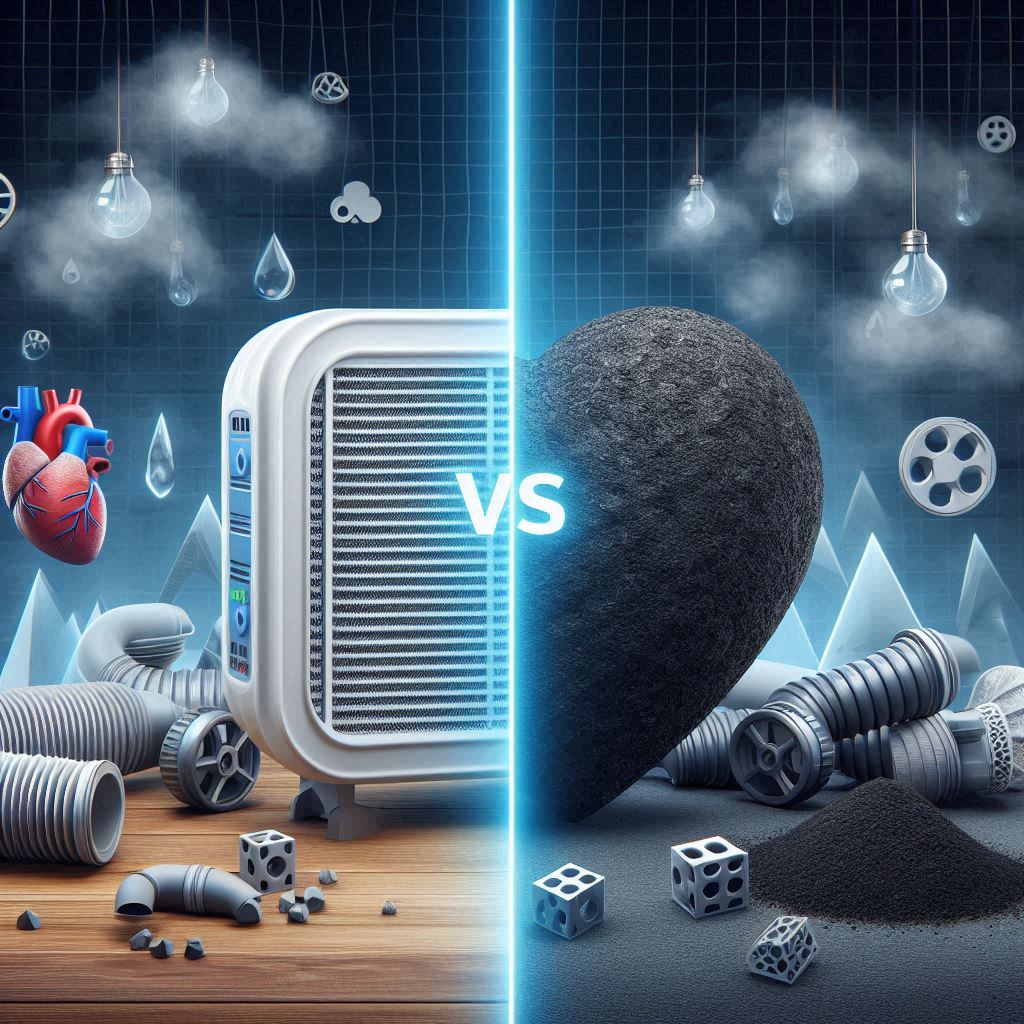Air purification is a crucial aspect of maintaining indoor air quality. Two commonly used filtration methods are HEPA filters and activated carbon filters. While both play a role in improving air quality, they serve different functions. In this article, we will break down the key differences between HEPA and activated carbon filters, their uses, benefits, and how Guanbaolin Carbon Industry plays a vital role in manufacturing high-quality activated carbon equipment.

Outline:
- Introduction
- What Is a HEPA Filter?
- How HEPA Filters Work
- Types of HEPA Filters
- Pros and Cons of HEPA Filters
- What Is an Activated Carbon Filter?
- How Activated Carbon Works
- Types of Activated Carbon
- Applications of Activated Carbon
- Key Differences Between HEPA and Activated Carbon Filters
- Particle vs. Gas Filtration
- Lifespan and Maintenance
- Common Uses
- Which One Should You Choose?
- Best Uses for HEPA Filters
- Best Uses for Activated Carbon Filters
- When to Use Both
- Guanbaolin Carbon Industry: Leading the Way in Activated Carbon Production
- The Role of Activated Carbon in Air Purification
- How Guanbaolin Carbon Industry Manufactures High-Quality Equipment
- Conclusion
- FAQs
What Is a HEPA Filter?
A HEPA (High-Efficiency Particulate Air) filter is designed to capture airborne particles such as dust, pollen, pet dander, and even bacteria. These filters are made of tightly woven fibers that trap microscopic pollutants.
How HEPA Filters Work
HEPA filters work by forcing air through a fine mesh that traps harmful particles. They are effective in capturing particles as small as 0.3 microns with 99.97% efficiency.
Types of HEPA Filters
- True HEPA: Meets the strictest standards for air filtration.
- HEPA-Type: Less efficient but still captures large particles.
Pros and Cons of HEPA Filters
- ✅ Removes fine particles effectively
- ✅ Ideal for allergy sufferers
- ✅ Used in medical and industrial settings
- ❌ Does not remove gases, odors, or chemicals
- ❌ Requires regular replacement
What Is an Activated Carbon Filter?
Activated carbon filters use porous carbon to absorb odors, gases, and volatile organic compounds (VOCs) from the air.
How Activated Carbon Works
The porous surface of activated carbon adsorbs gas molecules, trapping them inside. This makes it excellent for removing smoke, fumes, and chemicals.
Types of Activated Carbon
- Granular Activated Carbon (GAC): High adsorption capacity
- Powdered Activated Carbon (PAC): Used in water purification and air filtration
- Impregnated Carbon: Enhanced with chemicals to remove specific contaminants
Applications of Activated Carbon
- Air purifiers
- Water treatment plants
- Industrial gas purification
- Odor control in homes and workplaces
Key Differences Between HEPA and Activated Carbon Filters
| Feature | HEPA Filter | Activated Carbon Filter |
|---|---|---|
| Function | Captures solid particles | Absorbs gases and odors |
| Size of Particles Removed | 0.3 microns or larger | Molecules of gases and chemicals |
| Best For | Allergies, dust, bacteria | Smoke, chemicals, VOCs |
| Lifespan | 6-12 months | 3-6 months |
| Common Uses | Air purifiers, hospitals | Industrial plants, home purifiers |
Which One Should You Choose?
Best Uses for HEPA Filters
- Removing airborne allergens
- Improving air quality in hospitals
- Filtering out bacteria and viruses
Best Uses for Activated Carbon Filters
- Eliminating odors and gases
- Absorbing harmful chemicals
- Filtering out cigarette smoke
When to Use Both?
Using both filters together in an air purifier is ideal for comprehensive air purification—removing both solid particles and harmful gases.
Guanbaolin Carbon Industry: Leading the Way in Activated Carbon Production
The Role of Activated Carbon in Air Purification
Activated carbon plays a crucial role in removing pollutants from the air, making it a key component in air purifiers, industrial filtration systems, and water treatment solutions.
How Guanbaolin Carbon Industry Manufactures High-Quality Equipment
Guanbaolin Carbon Industry specializes in manufacturing cutting-edge activated carbon production equipment that ensures the highest efficiency in carbon activation, enhancing air and water purification systems worldwide.
Conclusion
While HEPA and activated carbon filters serve different purposes, they complement each other in creating cleaner air. If you’re looking for complete air purification, combining both is the best approach. Additionally, Guanbaolin Carbon Industry continues to play a crucial role in providing top-quality activated carbon equipment to industries worldwide.
FAQs
1. Can a HEPA filter remove odors?
No, HEPA filters are designed to capture solid particles but do not remove odors or gases.
2. How often should I replace my activated carbon filter?
Typically, every 3-6 months, depending on usage and air quality.
3. Is activated carbon safe for home use?
Yes, activated carbon is non-toxic and commonly used in air purifiers and water filters.
4. Can I use both HEPA and activated carbon together?
Absolutely! Many high-end air purifiers include both for comprehensive filtration.
5. What makes Guanbaolin Carbon Industry a leader in activated carbon production?
Guanbaolin Carbon Industry specializes in high-quality manufacturing of activated carbon equipment, ensuring efficient air and water purification worldwide.
Please don’t forget to leave a review.
Explore more by joining me on Patreon.
